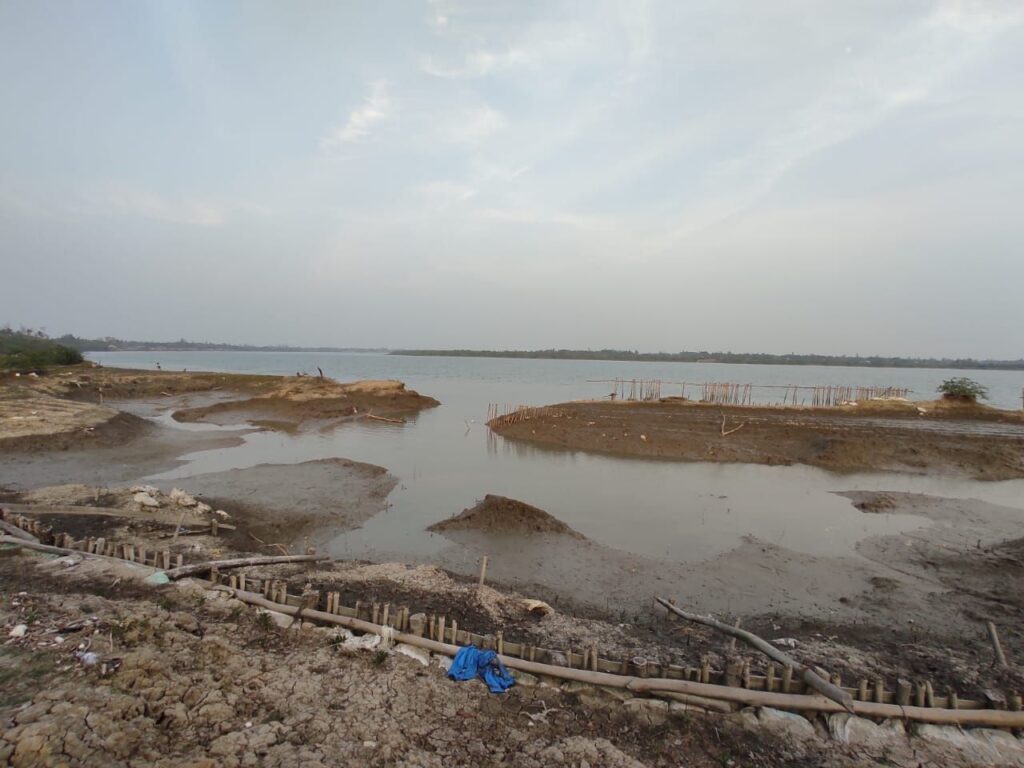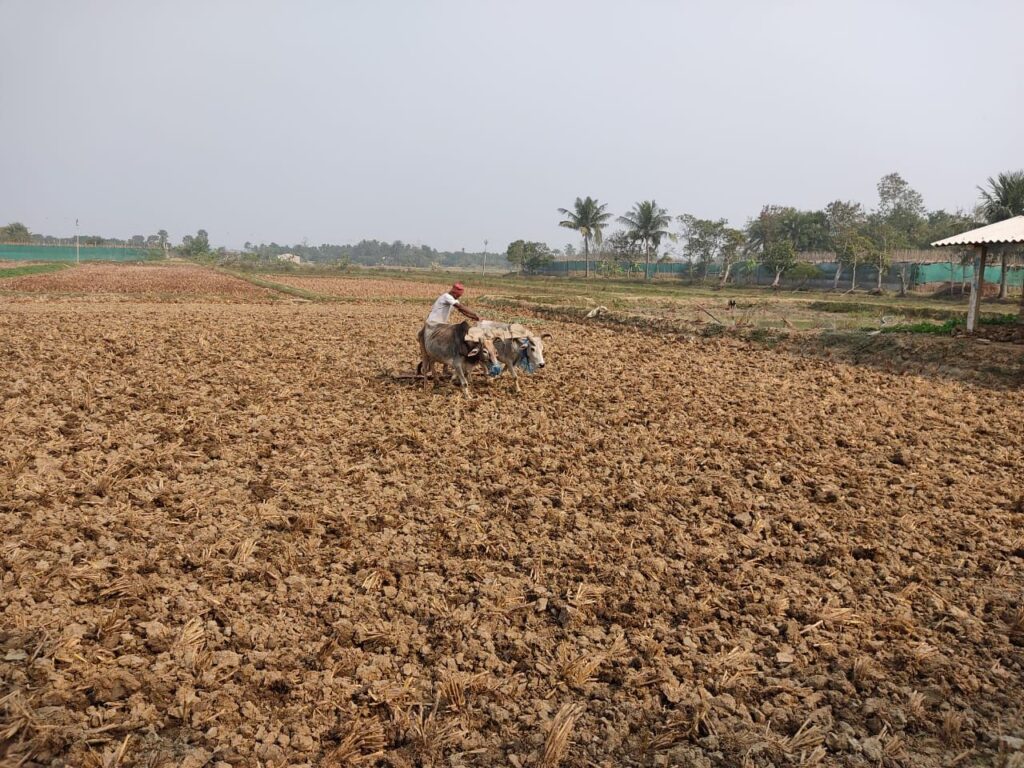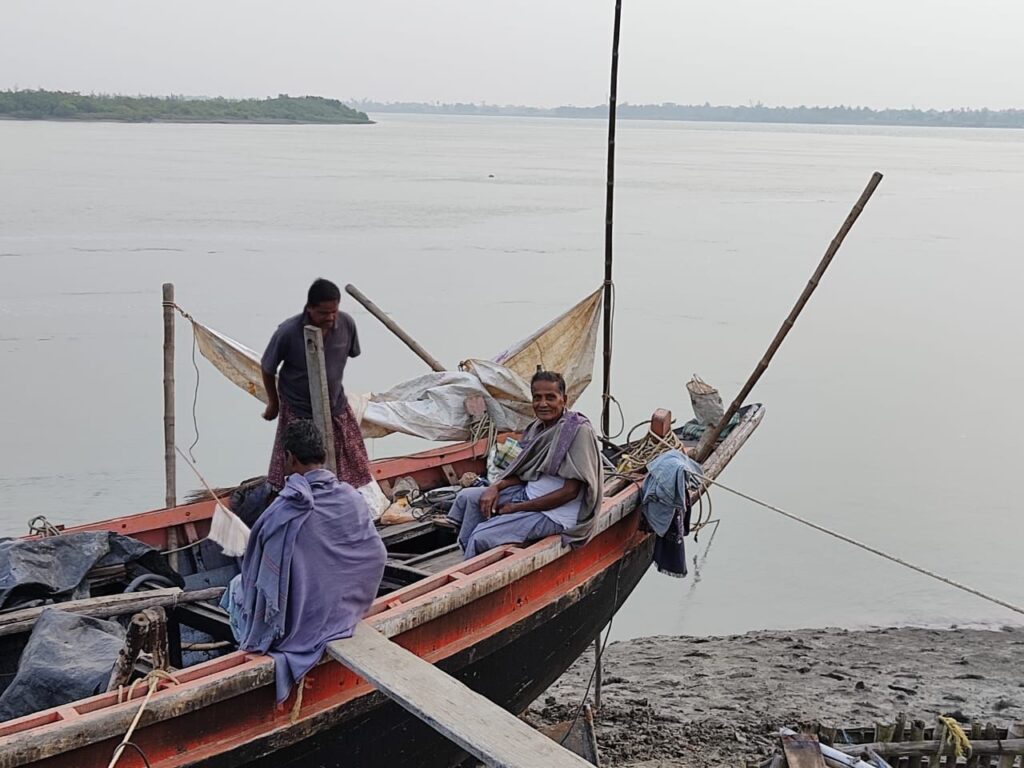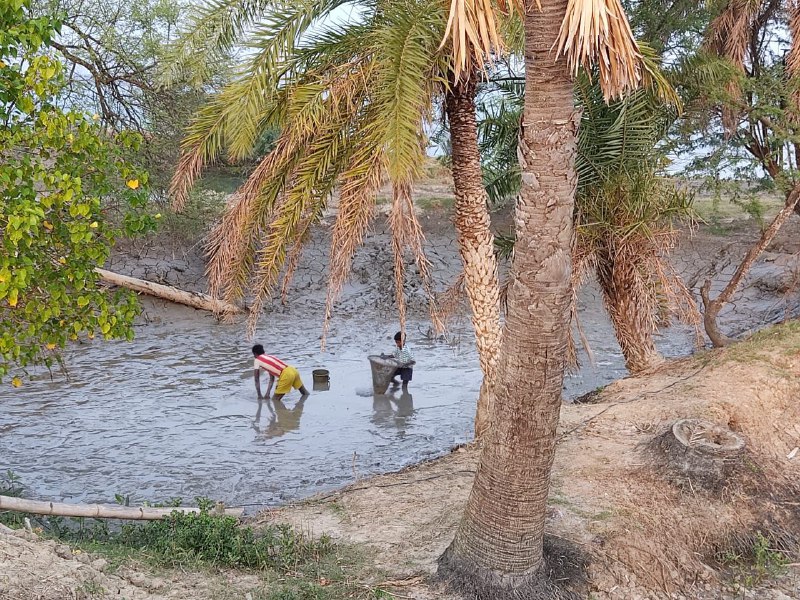Mr. Umashankar Mandal a school teacher by profession and an environmentalist by heart, is fighting all odds to prevent the impending doomsday in the Sunderban Delta. He began his journey of conserving the local Sundari trees after the disastrous cyclone Aila hit the region in 2009. “To get my work going, I had to initially face a lot of harassment from various sources, be it local mafias, businessmen, or even the ruling political party. The harassment was reduced after my work received recognition and news coverage both nationally and globally. Since 2009, 3600 families have been supplied rations with the help of donations. These recent cyclone formations are a completely new phenomenon, even to our grandfathers,” he says at his residence at Chargheri Village near the Marichjhapi Forest area in West Bengal.
According to the UN Environment CMS Fact Sheet, “there is existing evidence to show that climate change is causing warmer atmospheric temperatures, [resulting] in higher rates of evaporation and increased levels of water vapor in the atmosphere. This phenomenon is now causing higher levels of precipitation and volatile weather patterns. The monsoon season, in particular, has been considerably erratic in recent years, resulting in unpredictable damage to the environment and agricultural lands in the Sundarbans region. Climate specialists have predicted that as climate change progresses, monsoon seasons in the Sundarbans will become longer and more intense. Conversely, drought conditions will also become more pronounced, presenting further challenges for agricultural producers in particular and ecosystems in general. It is uncertain whether the ecosystems, species, and local inhabitants of the Sundarbans will be able to adapt to these changing and erratic conditions. Long-term coastal planning is needed to ensure that these critically important intertidal habitats, with their unique flora and fauna, and local inhabitants have the space to retreat inland unhindered as the water levels rise in the future.”

Assistant Professor in Geography at Raidighi College, Mr. Sanat Kumar Purkait shares his experiences of studying the Sunderban delta and says, “If you visit the Sundarbans, you will not find any trace of significant weather changes except for the impact of devastating cyclones like Aila, Amphaan, and Yash, etc. The weather pattern has been similar for the last two decades. The average rainfall and temperature are quite favorable for the growth and development of primary activities such as agriculture, pisciculture, aquaculture, etc. The issue, however, is the restoration of daily life for the locals after their property is damaged due to the tropical storms. The indigenous people are reluctant to shift from there. The Moule, Boule, and the fishermen, along with their children, are gradually moving from the Sunderbans to other states as migrant laborers to meet the daily needs of their families.”
Mr. Sajal Kumar Das, a teacher and resident of Mousuni Island, agrees with Mr. Mandal and provides his insight into the dangers that lurk for the locals of the area. “The whole Sunderban delta is losing its rich silt deposits, mainly due to rapid human development in the islands. With the increasing number of tourists, more people are restructuring their mud houses into modern cement and brick construction houses. The issue with this change is that the silt that earlier used to get deposited on the banks of the rivers is now washed away into the sea, thus reducing the fertility of the region and making farmers depend more on tourism services. Due to rapid development in the region, many canals and rivers are being blocked up and running dry. Once riverine water is mixed with seawater, it takes a minimum of two years to bring back the soil fertility,” he says.

Prof. Purkait provides solutions to the crisis of freshwater. “Proper river bank management includes dredging of the sediments from the river bed. Dredging may help to reduce soil erosion and seawater levels by deepening the river bed. No economic activity like fisheries or aquaculture can be supported in the river bed by constructing a temporary bund. You have to keep in mind that nature cannot be regulated permanently. You have to leave her space,” he recommends.
With a tone of disappointment, Mr. Das adds that “even in this alarming situation, the ruling government has focused on building tourist spots in these areas rather than focusing on sustainable development. The natural flow of the distributaries is being diverted, resulting in a loss in farming activities. Moreover, locals are dying due to lightning strikes nowadays. According to the reports by the Irrigation Department, villages like Kusumtola Bazaar are facing sea waves measuring 24 feet in height that grow to 7.25-7.50 metres (26 to 27 feet) during cyclones. Water salinity is causing issues for farmers in the western part of Mousuni Island.”

On being asked about the complaints being raised by the locals, Mr. Shankar Gharani, a representative of the local panchayat, elaborates, “When the storm warnings are given, we look at areas like Rangabelia and Kumirmari that need urgent redressal due to the fact that when tidal waves approach the shoreline, they completely destroy the temporary dams that are weak. Concrete dams are yet to be built in all areas to fortify the area against storm waves. The work is in process and the village of Lahirpur is one of the places that has this facility. After the storm subsides, we look into the relief work. This relief work is given the utmost attention by the state and central governments.”

Talking about irrigation facilities, Mr. Gharani adds, “In 2021, Rangabelia was tremendously affected in terms of farming. All the crops, be it rice or betel leaf, were destroyed due to the storms. The problems are still ongoing, and we are trying to solve them by building artificial canals and dams so that the stormwater does not flood the fields during cyclones, but with little effect till now. Wild animals like Bengal tigers can sometimes be seen roaming out of the forests after cyclones. The Forest Department is always on the lookout for such cases.”
Photographer: Sabyasachi Bandyopadhyay
Edited by Khushi Gupta

